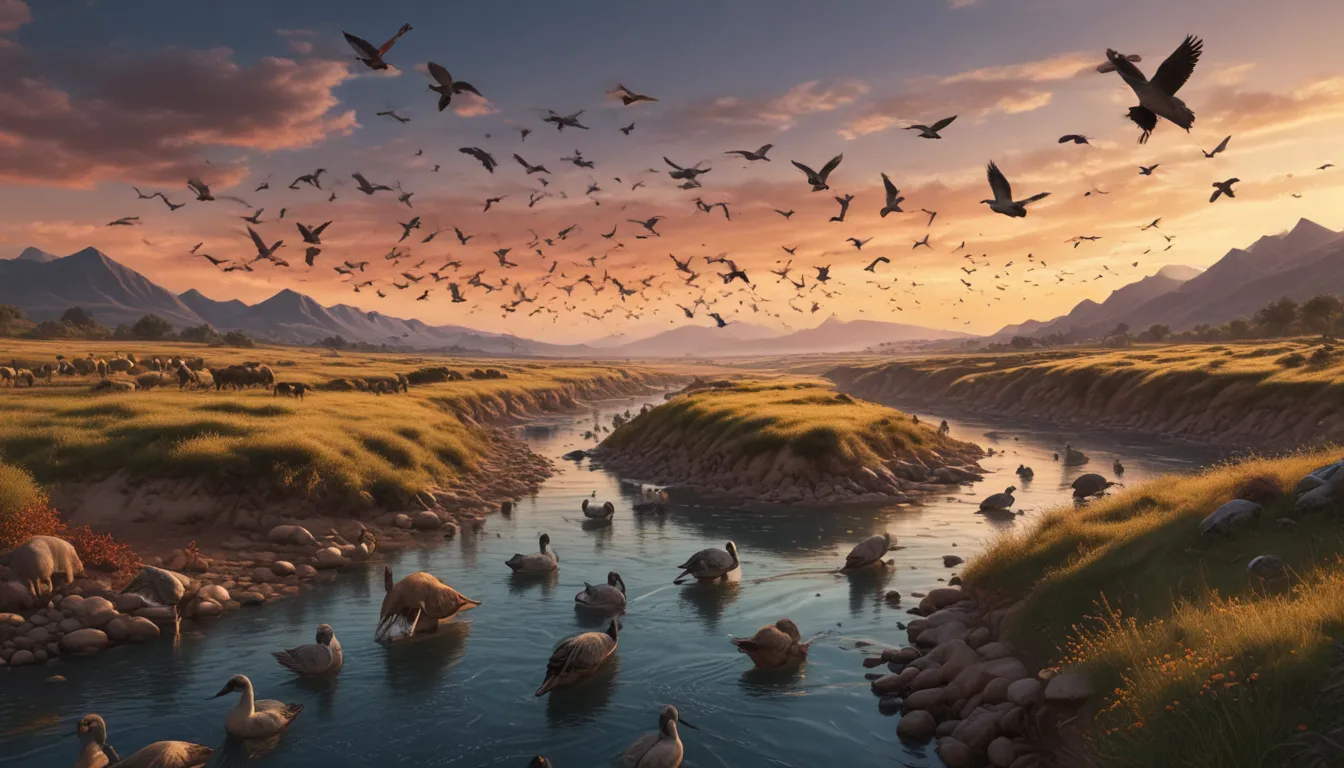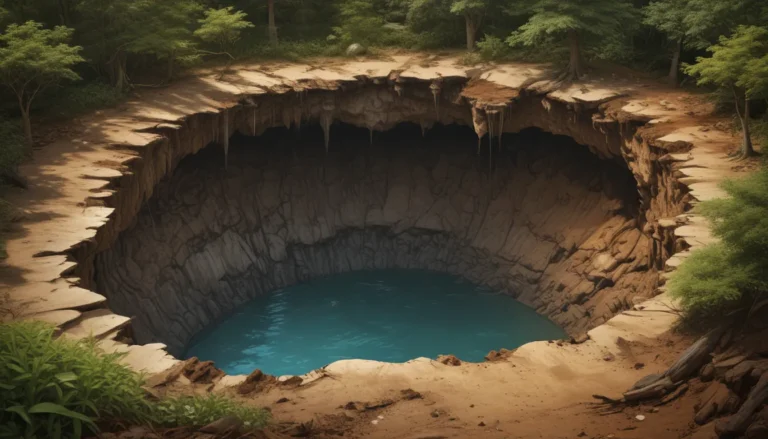A Note About Images: The images used in our articles are for illustration purposes only and may not exactly match the content. They are meant to engage readers, but the text should be relied upon for accurate information.
Migration is a captivating phenomenon that has influenced the world we inhabit, both in the natural realm and the human domain. From the majestic journeys of wildlife across continents to the enduring resilience of communities seeking a better life, migration embodies the essence of survival, adaptation, and exploration. In this article, we will embark on a fascinating exploration of 20 captivating facts about migration, spanning various species and geographical locations. Join us on this enlightening journey as we unravel the secrets of migration and discover the interconnectedness of all life on our planet.
Unveiling the Marvels of Migration:
- Migration: A natural and human phenomenon shaping our world and uniting diverse cultures.
- Diverse Species: From monarch butterflies to wildebeests, migration showcases incredible journeys across land, air, and sea.
- Interconnected World: Migration inspires art, literature, and scientific study, highlighting the profound impact on societies.
The Astounding Animal Migrations:
The Great Wildebeest Migration:
Every year, over 2 million wildebeest, along with zebras and other herbivores, traverse the Serengeti in search of fresh grazing lands.
Monarch Butterflies’ Incredible Journey:
These delicate insects undertake a migration covering thousands of miles, passing the torch from generation to generation.
The Arctic Tern’s Record-Breaking Flight:
Arctic Terns travel a staggering 44,000 miles annually from the Arctic to the Antarctic and back, showcasing an extraordinary feat of endurance.
Humpback Whales’ Majestic Treks:
Covering thousands of miles for breeding and feeding purposes, humpback whales journey from polar waters to tropical seas, nurturing their young along the way.
Bar-Headed Geese’s High-Flying Adventures:
These geese migrate at altitudes reaching up to 30,000 feet, allowing them to cross the mighty Himalayas with ease.
Human Migration Through History:
The Constant Movement of Human Societies:
From ancient civilizations expanding territories to modern diasporas driven by economic and social factors, human migration has been a persistent force throughout history.
The Impact of the Great Migration:
Millions of African-Americans moved from the rural South to urban areas in the North between 1916 and 1970, profoundly influencing the culture and demographics of the United States.
Captivating Aspects of Migration:
Witnessing Nature’s Spectacle:
The annual wildebeest migration in East Africa attracts tourists worldwide, offering a breathtaking spectacle of hundreds of thousands of animals crossing rivers.
Migratory Birds’ Remarkable Journeys:
Fueled by the search for food and better breeding grounds, many species of birds migrate during the spring and fall seasons, showcasing nature’s wonders.
Cultural Exchange and Enrichment:
Migration extends beyond physical relocation, encompassing the movement of cultures, ideas, and traditions, contributing to the diversity of societies worldwide.
The Marvels of Migration:
Specialized Adaptations in Migratory Animals:
From sea turtles’ navigational abilities to birds’ energy-saving flying formations, migratory species are equipped with unique skills for their journeys.
Multicultural Societies and Diversity:
Human migration has led to the development of multicultural societies, blending languages, traditions, and cultures to enrich the vibrancy of countries across the globe.
Climate Change and Migration Patterns:
Environmental factors, such as habitat alteration and changing weather patterns, can influence the timing and routes taken by migratory species, highlighting the impact of climate change.
Exploring the Impact of Migration:
Linguistic Borrowings and Globalization:
Language migration involves adopting foreign words and phrases into specific languages, often driven by cultural interactions and the spread of globalization.
Labor Migration and Economic Growth:
The migration of labor has become a significant feature of the global economy, fueling economic growth and facilitating cultural exchanges among nations.
Art, Literature, and Migration:
Numerous works of art and literature have explored the themes and experiences associated with migration, shedding light on its impact on individuals and communities.
The Dynamics of Wildlife Migration:
The North Atlantic Right Whale’s annual migration between feeding and breeding grounds highlights the critical role of migration in maintaining ecosystems and biodiversity.
Diving Deeper into Migration Studies:
An Interdisciplinary Approach:
The study of migration combines biology, anthropology, sociology, and other disciplines to understand the reasons, dynamics, and consequences of migration comprehensively.
Migration is a captivating aspect of our world, showcasing the enduring spirit of survival, adaptation, and exploration across species and human societies. The 20 fascinating facts about migration shared here merely scratch the surface of this incredible phenomenon, inviting us to delve deeper into its complexities and appreciate the interconnectedness of all life on our planet.
Concluding Thoughts:
Migration, in all its forms, is a remarkable and complex force that shapes ecosystems, cultures, and societies worldwide. By exploring the wonders of migration, we gain a deeper appreciation for the marvels of nature and the resilience of human beings. Let us continue to marvel at the beauty of migration and strive to create a world where the movements of all living beings are met with understanding, compassion, and respect.
FAQs:
Q: What is migration?
A: Migration refers to the seasonal or permanent movement of animals or people from one place to another, driven by various factors such as resource availability, climate change, or social and economic circumstances.
Q: How do animals navigate during migration?
A: Animals use celestial cues, landmarks, magnetic fields, and other sensory inputs for navigation during migration, showcasing remarkable navigational abilities across species.
Q: Why do people migrate?
A: People migrate for reasons such as seeking better economic opportunities, escaping conflict or persecution, reuniting with family, or pursuing education and career prospects, highlighting the diverse factors influencing human migration.
Q: How does migration impact ecosystems?
A: Migration plays a crucial role in maintaining ecosystem balance through seed dispersal, pollination, and predator-prey dynamics, emphasizing the interconnectedness between migratory species and their environments.
Q: Was this page helpful?
A: Our commitment to delivering trustworthy and engaging content ensures that each fact is contributed by real users, guaranteeing the highest standards of accuracy and authenticity in the information we share.
Embark on a journey of discovery through the wonders of migration, where resilience, adaptation, and exploration intertwine to shape our world and inspire us to appreciate the interconnectedness of all life on Earth.






